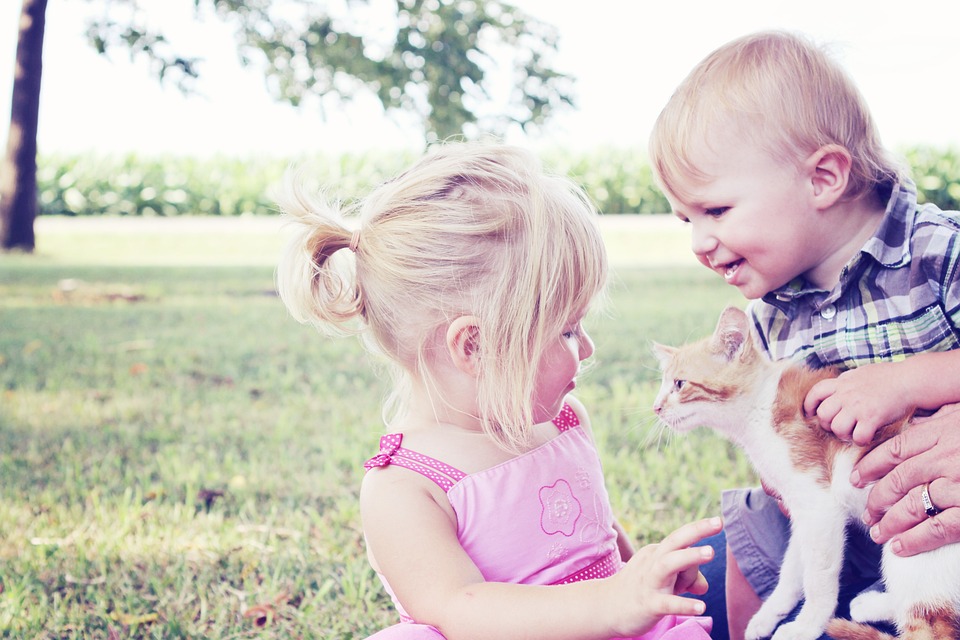
Understanding Kitten Behavior: What Your Feline Friend is Trying to Tell You
Bringing a kitten into your home is an exciting and rewarding experience. However, understanding their behavior can be challenging for both new and experienced cat owners. Kittens, with their playful antics and curious nature, communicate in ways that are not always immediately obvious to us. This article aims to provide valuable insights and practical advice to help you better understand your kitten’s behavior.
1. The Basics of Kitten Behavior
Kittens, like all animals, have natural instincts and behaviors that are vital for their development and survival. From the moment they are born, kittens are learning about the world around them. They observe their environment, explore, and interact with their littermates. Understanding these basic behaviors can help you interpret what your kitten is trying to communicate.
Playfulness and Exploration
Kittens are naturally curious creatures. They learn by playing, which helps them develop physical skills and social understanding. Playful behavior such as pouncing, chasing, and batting at objects is essential for their growth. Providing a variety of toys and safe spaces for exploration will encourage healthy development.
Socialization
Socialization is crucial for kittens, especially within the first few months of their life. Interacting with humans and other animals helps them become well-adjusted adults. Gentle handling and positive experiences with different stimuli will ensure they grow up to be friendly and confident cats.
2. Reading Your Kitten’s Body Language
Kittens communicate a lot through their body language. By paying attention to their posture, tail movements, ears, and eyes, you can gain insights into their emotional state and intentions.
Tail Movements
The position and movement of a kitten’s tail can tell you a lot about how they are feeling. A tail held high usually indicates happiness and confidence, while a tucked tail may suggest fear or submission. A twitching or lashing tail can signal excitement or agitation.
Ear Positions
Kittens’ ears are very expressive. Forward-facing ears generally indicate curiosity or interest, while ears that are flattened back may signal fear or aggression. Observing ear movement can give you clues about your kitten’s focus and emotions.
Eye Behavior
Eyes can be very telling in understanding kitten behavior. Slow blinking is a sign of trust and affection, often referred to as a “cat kiss.” Dilated pupils may indicate excitement or fear, depending on the situation. Pay attention to these subtle cues to better understand your kitten’s mood.
3. Vocalizations: What Your Kitten’s Sounds Mean
Kittens use vocalizations to communicate with their owners and other animals. Each sound can convey a different message, and learning to interpret these can strengthen your bond with your feline friend.
Meowing
Meowing is a primary way kittens communicate with humans. They may meow to get attention, express hunger, or signal discomfort. The tone, pitch, and frequency of meows can provide insight into what your kitten is trying to say.
Purring
Purring is often associated with contentment, but it can also indicate stress or self-soothing behavior. If your kitten is purring while displaying other signs of distress, such as hiding or refusing food, it may be worth consulting a veterinarian.
Hissing and Growling
Hissing and growling are defensive behaviors that signal fear or aggression. These sounds are a clear indication that your kitten feels threatened or uncomfortable. It’s important to give them space and identify any potential stressors causing this reaction.
4. Common Behavioral Issues and Solutions
While kittens are generally playful and curious, certain behaviors can pose challenges for owners. Understanding these issues and implementing solutions can help maintain a peaceful home environment.
Scratching
Scratching is a natural behavior for kittens and helps them mark territory and maintain healthy claws. To prevent damage to furniture, provide scratching posts and encourage their use with positive reinforcement.
Litter Box Problems
Some kittens may experience issues with using the litter box. Ensure the box is clean, easily accessible, and placed in a quiet location. If problems persist, consider consulting a veterinarian to rule out medical issues.
Separation Anxiety
Kittens can develop separation anxiety if they are left alone for extended periods. Gradually increase their alone time and provide stimulating toys to keep them occupied. Consistent routines can also help alleviate anxiety.
5. Building a Strong Bond with Your Kitten
Developing a strong bond with your kitten is essential for a harmonious relationship. Patience, understanding, and consistent interaction are key components in building trust and affection.
Positive Reinforcement
Using positive reinforcement techniques, such as treats and praise, encourages desired behaviors. This approach fosters a trusting relationship and helps your kitten feel secure and loved.
Interactive Play
Engage in regular interactive play sessions with your kitten. Use toys that mimic prey, like feather wands or laser pointers, to stimulate their hunting instincts. Interactive play strengthens your bond and provides essential mental and physical exercise.
Routine and Consistency
Establishing a daily routine helps your kitten feel secure and understand expectations. Feeding, playtime, and grooming should occur at consistent times each day. This stability allows your kitten to thrive and develop a strong sense of trust.
Conclusion
Understanding your kitten’s behavior is crucial for fostering a happy and healthy relationship. By observing their body language, vocalizations, and interactions, you can gain valuable insights into their needs and emotions. Addressing behavioral issues with patience and positive reinforcement will help you build a strong bond with your feline friend. Whether you’re a new or experienced cat owner, taking the time to understand your kitten’s behavior will lead to a rewarding and enriching experience for both of you.
#ChatGPT assisted in the creation of this article.








